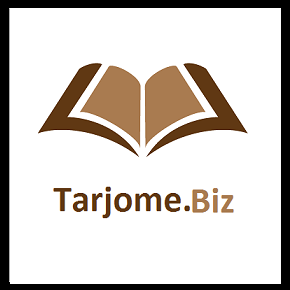دانلود رایگان مقاله ارزیابی کیفیت افشای اطلاعات حسابداری محیطی سازمانی براساس مدل پیگیری فرافکنی – سال 2021


مشخصات مقاله:
عنوان فارسی مقاله:
ارزیابی کیفیت افشای اطلاعات حسابداری محیطی سازمانی براساس مدل پیگیری فرافکنی
عنوان انگلیسی مقاله:
Quality evaluation of enterprise environmental accounting information disclosure based on projection pursuit model
سال انتشار مقاله:
2021
کلمات کلیدی مقاله:
اطلاعات حسابداری محیطی، کیفیت افشا، مدل پیگیری پروجکشن
مناسب برای رشته های دانشگاهی زیر:
حسابداری
مناسب برای گرایش های دانشگاهی زیر:
حسابداری مالی
وضعیت مقاله انگلیسی و ترجمه:
مقاله انگلیسی را میتوانید به صورت رایگان با فرمت PDF با کلیک بر روی دکمه آبی، دانلود نمایید. برای ثبت سفارش ترجمه نیز روی دکلمه قرمز رنگ کلیک نمایید. سفارش ترجمه نیازمند زمان بوده و ترجمه این مقاله آماده نمیباشد و پس از اتمام ترجمه، فایل ورد تایپ شده قابل دانلود خواهد بود.
فهرست مطالب:
Abstract
Keywords
1. Introduction
2. Design of quality evaluation indicators for EAID
2.1. Principles of indicator design
2.2. Selection and description of the indicators
2.2.1. Design of “relevance” level indicators
2.2.2. Design of “reliability” level indicators
3. Method
3.1. Model introduction
3.2. Model building
4. Results
5. Discussion
6. Conclusion
CRediT authorship contribution statement
Declaration of competing interest
Acknowledgments
References
قسمتی از مقاله انگلیسی:
1. Introduction
Since China’s reform and opening up and with its rapid economic development, environmental problems have become increasingly prominent. China’s environmental protection has made some progress, but the situation is still not optimistic. The environmental accounting information disclosure (EAID) is the first method to provide essential information on an enterprise’s environmental protection work, which means that environmental issues are included in an enterprise’s accounting information. In terms of the system, the Encouragement of Environmental Information Disclosure in Listed Companies in the Shenzhen Stock Exchange Guidelines to Enterprise Social Responsibility and the Guide to Environmental Information Disclosure of Listed Companies (Draft for Comment) require that heavily polluting industries should regularly disclose their environmental accounting information and encourage voluntary disclosure in other industries, reflecting the gradual improvement of the disclosure system. Nevertheless, the current lack of a regulatory system for the content of an EAID in China has resulted in a relatively arbitrary disclosure and the quality has been uneven. At present, scholars have conducted little systematic research on evaluating EAID quality, and there is no consensus on the establishment and selection of the evaluation indicators and method. Wang (2008), Luo et al. (2019), and Kong and Tang (2016) used the EAID as a variable to study its influencing factors in order to find a way to improve EAID quality. However, the reliability of EAID quality directly affects the results of the above studies. Therefore, from the perspective of strengthening supervision and improving EAID quality or providing a research basis for other research, it is necessary to establish a scientific and practical evaluation system.
Regarding the selection of the evaluation indicators, Newell et al. (1997) classified the environmental information disclosed by the enterprise into ten categories such as environmental plans, environmental strategies, environmental accidents, and environmental litigation. Patten and Trompeter (2003) believed that listed enterprises should disclose their compliance with environmental protection laws and regulations, their environmental risks, and their pollution control actions in annual environmental information. Aerts et al. (2007) scored the environmental information disclosure of sample enterprises in Europe. The content mainly includes environmental restoration, environmental expenditures, risk, land restoration, and law enforcement. Shen et al. (2014) proposed evaluating enterprise EAID quality using three aspects:pollution emissions, environmental management and social impact. Chaklader and Gulati (2015) believed that the evaluation should be based on five aspects: the disclosure of the environmental system of the enterprise’s location, environmental governance strategies, environmental costs, specific environmental protection programs, and enterprise environment-related rewards or penalties. Wang and Zhang (2018) said that the evaluation must include environmental accounting financial information, environmental performance information and three other categories. Ren (2019) concluded that Chinese theoretical circles have the following four views on the content of environmental accounting information and its elements: the three-element theory, the fourelement theory, the five-element theory, and the six-element theory; furthermore, the six elements ensure consistency with traditional accounting systems. Generally, the scholarly research on the selection of environmental accounting information quality evaluation indicators is lacking, the classification lacks logic, and the descriptions are rough or even difficult to define, resulting in incompleteness or overlap. As the evaluation indicators become more comprehensive and clearer, the results of the evaluation will become more accurate.


